VOL- 6, ISSUE- 4, PUNE RESEARCH DISCOVERY (ISSN 2455-9202) JIF 3.01
6.4 DISCOVERY
Area of Article : ALL
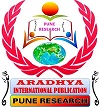
VOL- 6, ISSUE- 4, PUNE RESEARCH DISCOVERY (ISSN 2455-9202) JIF 3.01
Editor-in-Chief
ABSTRACT
VOL- 6, ISSUE- 4, PUNE RESEARCH DISCOVERY (ISSN 2455-9202) JIF 3.01
6.4 DISCOVERY

VOL- 6, ISSUE- 4, PUNE RESEARCH DISCOVERY (ISSN 2455-9202) JIF 3.01
6.4.1 DISCOVERY
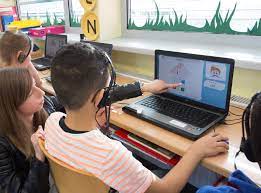
This
article examines the adoption of Advance Technology for teaching effectiveness
and new job roles issues confronting the
college teaching staff in this technological era. The result of the
study shows that most of the process i.e. achievement, movement, successive
gearshifts and teaching effectiveness needs to be improved with the advance
technology. The study further highlights and shares inspiring vision, suitable staffing and
training, open communication, participative management and motivation to
provide efficient and effective services in the Advance technological environment.
VOL- 6, ISSUE- 4, PUNE RESEARCH DISCOVERY (ISSN 2455-9202) JIF 3.01
6.4.2 DISCOVERY
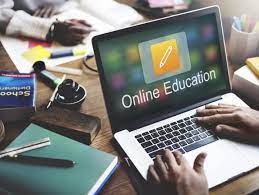
In
this research article, the researcher focuses on paradigm shifting in offline
education to online education and its effectiveness of college Teachers during
Covid-19 pandemic. Recently Covid-19 pandemic increasing in India very high
level and created extra pressure on education system that dramatically changes
the student teacher ratio. Horizon of education changes from local to global
and at least theoretically it become knowledge center the concept of
residential student is almost it became outdated. So present research suggests,
learning tools wise used of proper technologies and its helps college
teacher.
VOL- 6, ISSUE- 4, PUNE RESEARCH DISCOVERY (ISSN 2455-9202) JIF 3.01
6.4.3 DISCOVERY

Technology
provides various types of tools and techniques
that teachers can use in and out of the classroom to enhance students
effective teaching and learning . It ushers in fundamental structural changes
that can be integral to achieving significant improvements in productivity . It
also has the power to transform teaching and learning by ushering in a new model of connected
education . This model links teachers to their students and to professional
content , resources, and systems to help them improve their own instruction
and personalized learning. The present research paper focuses
on the role of technology in effective teaching and learning. This research paper throws light on the use
of technology in education field. The major purpose about using technology
enhance teaching and learning in a number of different ways. The present study
mainly focuses on specific types of teaching and learning tools.
Keywords : Technology , Teaching , Learning , Software ,
Resources , Tools , Education , Blended , Online .
VOL- 6, ISSUE- 4, PUNE RESEARCH DISCOVERY (ISSN 2455-9202) JIF 3.01
6.4.4 DISCOVERY
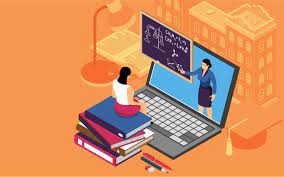
The
aim of the study is to analyse the opportunities and challenges of emergency
remote teaching based on experiences of the COVID-19 emergency. A qualitative
research method was undertaken in two steps. In the first step, a thematic
analysis of an online discussion forum with international experts from
different sectors and countries was carried out. In the second step (an Italian
case study), both the data and the statements of opinion leaders from secondary
online sources, including web articles, statistical data and legislation, were
analysed. The results reveal several technological, pedagogical and social
challenges. The technological challenges are mainly related to the
unreliability of Internet connections and many students’ lack of necessary
electronic devices. The pedagogical challenges are principally associated with
teachers’ and learners’ lack of digital skills, the lack of structured content
versus the abundance of online resources, learners’ lack of interactivity and
motivation and teachers’ lack of social and cognitive presence (the ability to
construct meaning through sustained communication within a community of
inquiry). The social challenges are mainly related to the lack of human
interaction between teachers and students as well as among the latter, the lack
of physical spaces at home to receive lessons and the lack of support of
parents who are frequently working remotely in the same spaces. Based on the
lessons learned from this worldwide emergency, challenges and proposals for
action to face these same challenges, which should be and sometimes have been
implemented, are provided.
Keywords: onlinelearning; emergency remote teaching;
technological challenges; pedagogical challenges; social challenges
VOL- 6, ISSUE- 4, PUNE RESEARCH DISCOVERY (ISSN 2455-9202) JIF 3.01
6.4.5 DISCOVERY
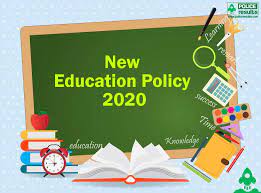
The main objective of this paper is to tell
about Blended Learning in comparing with conventional teaching and learning
methods. Mentoring system in academics, a conventional method of teaching
introduced in the New Education Policy 2020, is taken for assessment to the
B.L. This paper also focuses on how a traditional teacher must update his
attitude of teaching besides his traditional tools of teaching like; the
syllabus, the text book and the examination system. In this paper, it is also
discussed about Blended Learning, of course, a new tool of teaching and
learning but a supporting one to the NEP 2020. This paper also gives vent some
challenges a contemporary teacher confronts by using BL, a method of teaching
in the new policies of ‘Mentoring’ which requires certain processes;
demonstration, questioning, explanation, practice and conference or discussion.
Finally, this paper concludes how far the Blended Learning can be useful to the
current policies of education.
Key Words:
Blended Learning – A style of education in
which students learn via electronic and online media as well as traditional
face-to-face teaching.
Mentoring – to support and encourage people to
manage their own learning.
VOL- 6, ISSUE- 4, PUNE RESEARCH DISCOVERY (ISSN 2455-9202) JIF 3.01
6.4.6 DISCOVERY
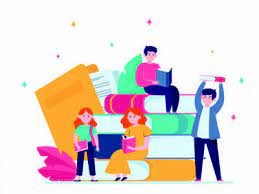
Commending
the rapid growth of technology and its consistent development has now spread
its wings in our daily lives. Be it shopping for groceries, travel, office or
education, technology holds a significant position in the modern world. The
purpose of this research is to analyse the advantages and challenges put upon
by modern learning system called blended learning. It refers to a mixture of
teaching and learning strategies that can be used to optimise learning
experiences of students and teachings practises of teacher. Throughout the
years, new methods and strategies have been introduced in teaching which
started from basic smart boards and now it has become way normal to attend a
complete online class in the comfort of your own house. In this paper, the
advantages of having blended education with technology will be identified along
with the challenges faced by educators, instructors and students due to change
of learning strategies with the introduction of new technology.
Keywords: Modern learning system, blended learning,
teaching strategies, online education, educational transformation
VOL- 6, ISSUE- 4, PUNE RESEARCH DISCOVERY (ISSN 2455-9202) JIF 3.01
6.4.7 DISCOVERY
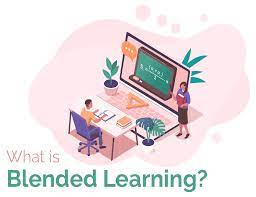
Blended learning continues to grow as an
approach to meeting learners need, especially as schools, Colleges put more
computers and other devices into students’ hands. The growth of blended
learning is generally paced at the comfort of teachers as they expand their
useof digitaltools for teaching and learning. At present
learning to teach with digital tools
seems to other stakeholders in a
rich dialog that places the learner at the center of the conversation, to be
the greater focus than exploring how to deepen students’ learning. The use of
technology in classrooms and other innovations in teaching is a good foundation
to build on traditional instructional methods. Digitalization is an opportunity
to eradicate inequity in education. Blended learning or “hybrid learning”
represents a learning model that combines both formal (traditional classroom)
and non-formal (online courses) methodologies. But the reference that I prefer
is that blended learning represents a model that integrates technology to boost
learning and deliver business impact. The combination of multimedia and
instructional design makes the perfect recipe for a rich learning experience.
Blended learning needs rigorous efforts, the right attitude, a handsome budget,
and highly and motivated teachers for its successful implementation.
Face-to-face interaction meets the affective knowledge and professional skills.
The result is that our students are not well prepared to meet the demands of
the modern market and professions. A strategy in place keeps in mind that
blended learning is a model that needs a lot of flexibility. The demand of
today is an approach that blends the advantages of both the modes for the
student’s learning i.e. blended learning.
Keywords: hybrid, multimedia, methodologies, innovations, blend
VOL- 6, ISSUE- 4, PUNE RESEARCH DISCOVERY (ISSN 2455-9202) JIF 3.01
6.4.8 DISCOVERY
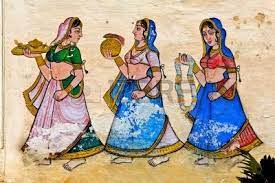
The attitude of a community towards the woman
has great social significance in any society.
In Indian society from the Vedic age, women’s names are mentioned, who
attained eminence along with men. Recent
cross-cultural studies by anthropologists like Margaret Mead seem to indicate
clearly that personality and character differences are in general basically
influenced by the cultural norms of the society in which an individual is born
and bred. From a study of education in Ancient India, it became clear that
women learnt all types of education as afforded by the opportunities. Many girls studied literature and became
teachers, debaters and orators and some of the girls attained perfection in
military science and administration, especially those who belong to the ruling
families. Though we noticed women armies
in the Vedic period. This opportunity as
days passed on seemed to have been dwindled in the common folk. The training given to women in different
vocations such as weaving, basket making etc., seemed to have continued and
remained as a profession of caste.
Because of the education given in military science and administration to
the girls of the rich families, they could occupy higher positions and became
successful administrators, otherwise it is not possible to account for the
success of dowager queens like Naganika of the Satavahana dynasty, Prabhavati
Gupta of the Vakataka family, Vijayabhattarika of Chalukyas of Badmi, the queen
of Lalitabharana in Orissa of Chaliyan house, Rudramaba of Kakatiya family,
Didda of Kashmir, Nagama Nayakuralu of Palnad and Ballamahadevi of Alupu
dynasty. These queens at times ruled
independently, at times as regents, at times jointly with their husband while
at times jointly with their husband while at times with their sons. History unfortunately recorded only a few
women. By the study of the lives of
these women in History, we get sufficient impetus and motivation to bring out
the greatness, hitherto this strength was hidden in us to overcome the
challenges individually, which will eventually help the society at large.
Key Words: 1.
Women 2. Administration 3. Rulers 4. Queen 5. Regent.
VOL- 6, ISSUE- 4, PUNE RESEARCH DISCOVERY (ISSN 2455-9202) JIF 3.01
6.4.9 DISCOVERY
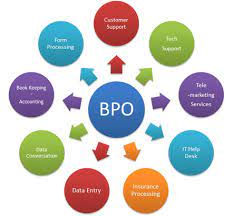
Employee retention is a process in which the employees are encouraged to remain with the organization for the maximum period of time or until the completion of the project. Employee retention is beneficial for the organization as well as the employee. Employees today are different. They are not the ones who don’t have good opportunities in hand. As soon as they feel dissatisfied with the current employer or the job, they switch over to the next job. It is the responsibility of the employer to retain their best employees. If they don’t, they would be left with no good employees. A good employer should know how to attract and retain its employees. Most employees feel that they are worth more than they are actually paid. There is a natural disparity between what people think they should be paid and what Organizations spend in compensation. When the difference becomes too great and another opportunity occurs, turnover can result. Pay is defined as the wages, salary, or compensation given to an employee in exchange for services the employee performs for the organization. Pay is more than "dollars and cents;" it also acknowledges the worth and value of the human contribution. What people are paid has been shown to have a clear, reliable impact on turnover in numerous studies. Employees comprise the most vital assets of the company. In a work place where employees are not able to use their full potential and not heard and valued, they are likely to leave because of stress and frustration. In a transparent environment while employees get a sense of achievement and belongingness from a healthy work environment, the company is benefited with a stronger, reliable work-force harbouring bright new ideas for its growth Blog Online and Earn Money.
Keywords Human Resource, Employee Retention,
Determining Factors, Employee assets, compensation, strategies, dynamic
environment, salary and monthly wages, Employee turnover, Payroll, Employee
costs
VOL- 6, ISSUE- 4, PUNE RESEARCH DISCOVERY (ISSN 2455-9202) JIF 3.01
6.4.10 DISCOVERY
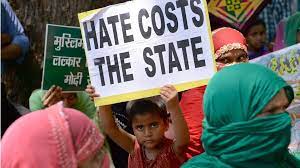
Literature
has the power to perform the revolutionary and reactionary functions. This fact
makes it a very potent tool: a tool that has been conspicuously utilized since
the reformation. The present paper is an attempt to analyze the poetic output
of the minds of the Dalit poets of India. The themes of Dalit poetry reflect
the hard and harsh realities of the metaphorical calibans life. Officially
India gained independence in 1947, so did the Dalit, in theory. The ground
reality is different Untouchability was decreed unconstitutional in India on
paper but the people of that caste were never freed of the stigma in practice. They
continued being the unpurchased slaves of the upper castes because of the
monolithic social structure of India. This paper will highlight the lives of
Dalits beings crushed and their struggle as an algorithm with no equation of
living a good life
Key words – caste, Dalit, Sufferings, survival
VOL- 6, ISSUE- 4, PUNE RESEARCH DISCOVERY (ISSN 2455-9202) JIF 3.01
6.4.11 DISCOVERY
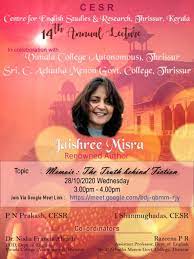
Among Indian English Writers
Jaishree Misra has a recognizable place as she analyses into the psyche of the contemporary womenkind.Misra,
in her career takes a deviated path from that of the male writers of the
contemporary era also by not regulating her writing by the male literary
convention.Though her women characters are presented to be suffers and
revolutionaries ,they are animated with the spirit of full life and shoulder at
the instants of disappointmnts with overriding stamina challenging the causes
that decompose them.
Key words: women, contemporary, revolutionaries
VOL- 6, ISSUE- 4, PUNE RESEARCH DISCOVERY (ISSN 2455-9202) JIF 3.01
6.4.12 DISCOVERY
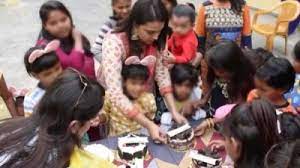
Historically,
an orphanage is a residential institution, or group home, devoted to the care
of orphans and other children who were separated from their biological
families. Examples of what would cause a child to be placed in orphanages are
when the parents were deceased, the biological family was abusive to the child,
there was substance abuse or mental illness in the biological home that was
detrimental to the child, or the parents had to leave to work elsewhere and
were unable or unwilling to take the child. Though India has a large number of
orphans only few are lucky to get a family through adoption. Most of the
couples prefer to have their child through surrogacy. In the last two years Orphaned
children faced traumatic condition during the pandemic when many children saw
their parents die in front of their own eyes. In this article an effort is made
to know the real problems of the orphans of Karaikal. Researcher has tried to
find the ways to protect children from further exploitation.
Keywords: Orphan, Half Orphan, Abandoned Child,
Orphanage, Care Taker, Paternal
Orphan